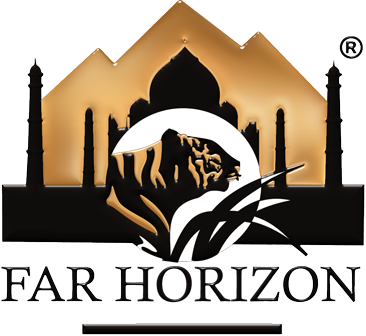Big 5 Wildlife Tour
more_vert
Introduction
Far Horizon welcomes you to a specially designed tour of India's national parks and wildlife sanctuaries. With its huge and varied landmass and vegetation, India is home to a large variety of wildlife with some of the finest game parks and tiger reserves. India has about four hundred species of mammals and 1300 species of birds. It is the only country to have the Asiatic Lion and is home to about 65% of the world's tigers and 85 % of the world's Asian one horned rhinos. We have specially designed this tour to include national parks, wildlife sanctuaries as well as places rich in history and culture such as Delhi, Jaipur, Agra and Khajuraho. It also offers you an introduction to the rustic rural life in Kalakho and an interaction with the colorful Meena tribe to truly Experience the Living Cultures of India.
Tour Highlights
- Thrill of seeing the Royal Bengal Tiger, Lion, Single Horne Rhino, Asiatic Wild Elephant and Leopard in the Wild
- Explore three Metro Cities of India i.e Delhi, Mumbai and Kolkata
- Visit the Unesco World Heritage Sites
- 10 Exclusive Safaris in the 3 major National Parks of India
- Explore the City of Lakes "Udaipur"
Destinations Covered
Kolkata
The City of JoyKolkata (formerly Calcutta) is the capital of West Bengal and the second largest city in India (after Mumbai). This city is a daily festival of human existence, simultaneously noble and squalid, cultured decidedly futuristic.
History and Culture
The history of Kolkata is intimately related with its invention during the British rule dating back 300 years ago. Earlier known as Calcutta, it originated as a capital of British India in 1960 when East India Company dominated the country.
Kaziranga National Park
The haven of one-horned rhinosA UNESCO World Heritage site, Kaziranga is famous as the abode of the one-horned rhinoceros. Made unique with a vibrant, well preserved and sustained ecology this park has a very versatile bio diversity which makes Kaziranga National Park a very important and popular tourist destination.
Delhi
The City of GloryDelhi is said to be one of the oldest existing cities in the world, along with Jerusalem and Varanasi. It is the Capital Territory of India and a modern-day citadel that's dotted with ancient monuments.
History and Culture
Legend estimates it to be over 5,000 years old. Over the millennia, Delhi is said to have been built and destroyed 11 times. The oldest alleged incarnation of the city shows up in the Indian mythological epic Mahabharata as Indraprastha.
Tadoba National Park
The Abode of Tigers in MaharashtraSituated in the core of a reserved forest and spread in the area of 1727 sq. km, Tadoba National Park lies in the Chandrapur district of Maharashtra (India). It is also known as the "Tadoba Andhari Tiger Reserve" and it is one of India's 47 project tiger reserves existing in India.
Mumbai
The City of DreamsIndia’s largest port, its commercial and industrial center, as well as fashion capital and heart of Bollywood (India’s thriving movie industry), Mumbai is an endlessly fascinating hive of activity. A jumble of captivating contradictions, grand colonial architecture rubs shoulders with chaotic bazaars, trendy restaurants, exclusive boutiques, slums and shanty towns, all interspersed with beautiful, tropical palm trees. A shopper’s haven, this bustling cosmopolitan metropolis offers anything from pavement stalls and ancient markets to glitzy malls and designer outlets.
Gir National Park
The Land of Asiatic LionsLocated in the western part of Gujarat, Gir National Park & Wildlife Sanctuary is the only place outside Africa where lions are living. Spread across 1412 sq.km the park is a blend of dry deciduous forest and Savannah forest.
Udaipur
Venice of the EastUdaipur, also known as the City of Lakes, is the crown jewel of the state of Rajasthan. It is surrounded by the beautiful Aravalli Hills in all directions, making this city as lovely as it is. This 'Venice of the East' has an abundance of natural beauty, mesmerising temples and breathtaking architecture which makes it a must-visit destination in India.
Jawai Bandh
The Land of LeopardsThe Jawai hills located in the Pali district of Rajasthan are known as the leopard hills, surrounded by Jawai Bandh and grasslands while the area is enclosed by the Aravali range. Considered among one of the lesser known tourist destinations, this place deserves much more attention than it gets.
Detailed Itinerary
- Day 1 Arrive Kolkata
- Day 2 Kolkata
- Day 3 Kolkata – Guwahati – Kaziranga National Park
- Day 4 Kaziranga National Park
- Day 5 Kaziranga National Park – Guwahati – Delhi
- Day 6 Delhi
- Day 7 Delhi – Nagpur – Tadoba National Park
- Day 8 Tadoba National Park
- Day 9 Tadoba National Park
- Day 10 Tadoba National Park – Nagpur – Mumbai
- Day 11 Mumbai
- Day 12 Mumbai – Diu – Gir National Park
- Day 13 Gir National Park
- Day 14 Gir National Park - Diu - Mumbai
- Day 15 Mumbai - Udaipur
- Day 16 Udaipur
- Day 17 Udaipur - Jawai Bandh
- Day 18 Jawai Bandh
- Day 19 Jawai Bandh - Udaipur - Mumbai / Departure




















